Key Takeaways
- Termites are “silent destroyers” that feed on wood and weaken structures.
- Subterranean termites build mud tubes and eat wood from the inside out.
- Drywood termites live in dry wood and leave behind small piles of frass.
- Formosan termites form massive colonies and cause rapid structural damage.
- Dampwood termites are found in moist, decaying wood near water damage.
- Conehead termites travel above ground and spread infestations quickly.
- Signs of termites include hollow wood, mud tubes, frass, and swarms.
- Prevent infestations with moisture control, sealing, and firewood storage.
- Professional termite control ensures accurate identification and long-term protection.
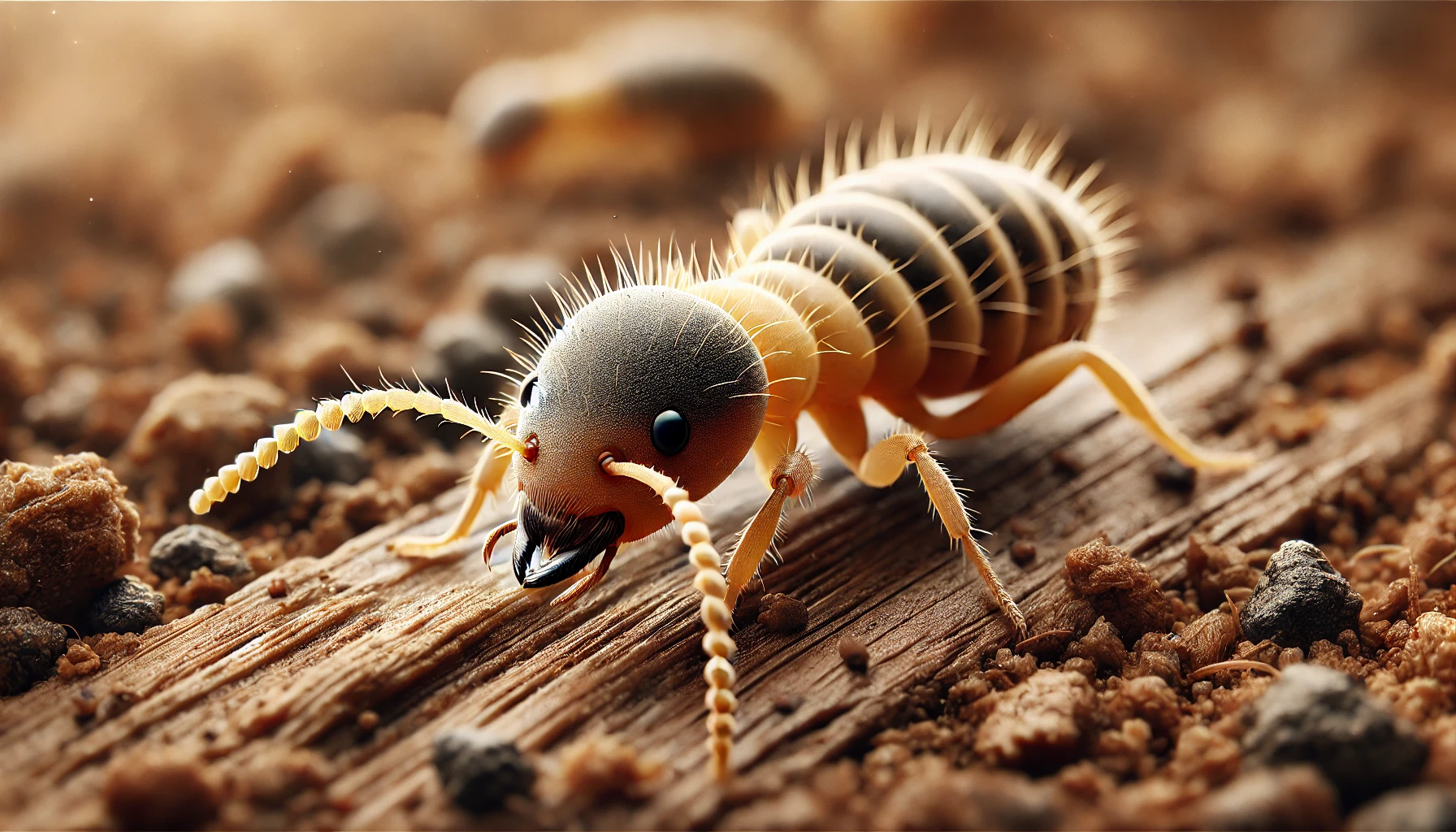 Termites have been given the nickname “silent destroyers” owing to their ability to cause extensive damage to homes and structures without being detected. These pests feed on cellulose, which is found in wood, insulation, and other plant-based materials, posing a serious threat to buildings.
In this article, we will take a look at the types of termites, how to recognize termite damage and prevention tips for managing them.
If you suspect termite activity or want to safeguard your home, our expert termite control services can help. Learn more about how we can protect your property effectively and affordably by taking our Free Pest Inspection visit.
Termites have been given the nickname “silent destroyers” owing to their ability to cause extensive damage to homes and structures without being detected. These pests feed on cellulose, which is found in wood, insulation, and other plant-based materials, posing a serious threat to buildings.
In this article, we will take a look at the types of termites, how to recognize termite damage and prevention tips for managing them.
If you suspect termite activity or want to safeguard your home, our expert termite control services can help. Learn more about how we can protect your property effectively and affordably by taking our Free Pest Inspection visit.


Not getting a solution?
Get your free pest control estimate today!What is a Termite?
Termites are small, social insects from the order Isoptera that live in large colonies, which can range from a few hundred to several million members. While they play an essential ecological role by breaking down dead plants and trees and recycling nutrients into the soil, termites can also become a serious threat to homes and buildings. When they invade human structures, they feed on wooden components, compromising the structural integrity of properties.Physical Characteristics of Termites
-
Shape: Termites have a uniform, cylindrical body shape, lacking the narrow, pinched waist seen in ants.
-
Size: Depending on the species, termites are about 0.125 inch to 0.5 inch in size.
-
Color: Their soft, pale bodies can range from white to light brown, with soldier termites often appearing darker.
-
Antennae: Unlike ants, termites have straight antennae rather than bent ones.
-
Legs: Termites, like all insects, have six legs that help them move efficiently within wood and soil environments.
Types of Termites
Termites are classified into several types based on their habitats, feeding habits, and the extent of damage they cause. Each type has unique traits that influence how they infest homes and other structures. Understanding these differences is key to effective termite control and prevention.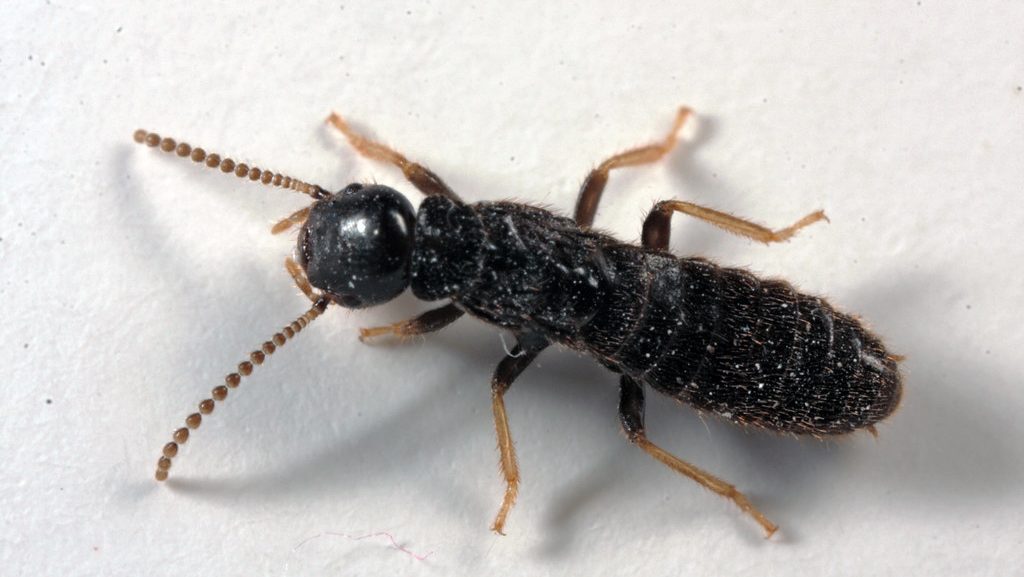 Subterranean Termites
These are among the most destructive types of termites found worldwide. They are very common and build large colonies underground and use mud tubes to access food sources, such as wooden structures in homes.
Subterranean Termites
These are among the most destructive types of termites found worldwide. They are very common and build large colonies underground and use mud tubes to access food sources, such as wooden structures in homes.
Characteristics of Subterranean Termites
-
Shape: Long, cylindrical bodies with a distinct head and thorax.
-
Size: Workers are around 1/8 inch (3 mm) long, while soldiers and swarmers are slightly larger.
-
Color: Creamy white to light brown in color.
-
Habitat: Found underground or in moist soil. They build mud tubes on walls, foundations, and wooden structures to maintain moisture as they forage for food.
-
Damage: They eat wood from the inside out, often leaving only a thin outer shell intact. Their mud tubes are a key sign of an infestation.
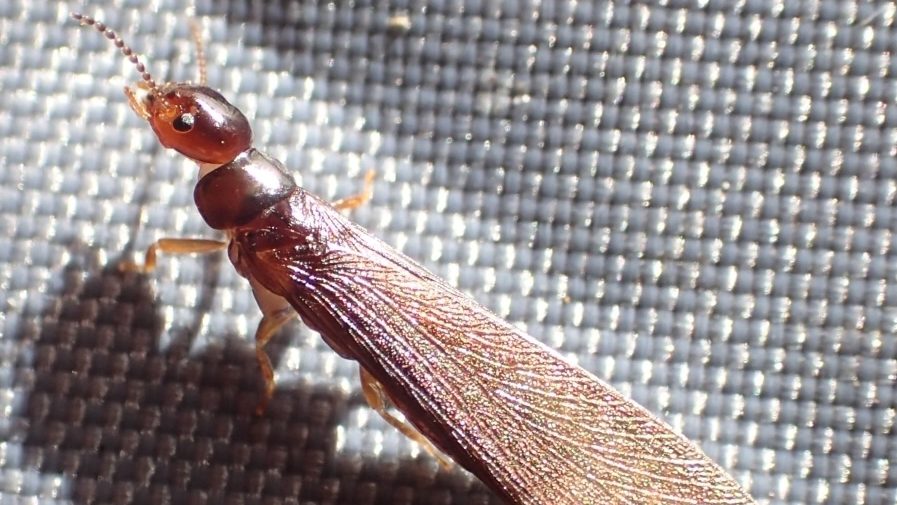 Drywood Termites
Unlike subterranean termites, drywood termites do not rely on soil for survival. They infest dry wood and can live in furniture, structural beams, and wall studs.
Drywood Termites
Unlike subterranean termites, drywood termites do not rely on soil for survival. They infest dry wood and can live in furniture, structural beams, and wall studs.
Characteristics of Drywood Termites
-
Shape: Compact, elongated bodies with small, rounded heads.
-
Size: Roughly 3/8 inch (10 mm) in length.
-
Color: Light brown to reddish-brown, with darker wings in swarmers.
-
Habitat: Found inside dry, undecayed wood like furniture, floors, and wood frames. They don’t build mud tubes, as they don’t require soil contact.
-
Damage: Drywood termites chew through dry wood, creating galleries and hollow voids. They leave behind small holes and piles of frass (droppings) resembling sawdust or coffee grounds.
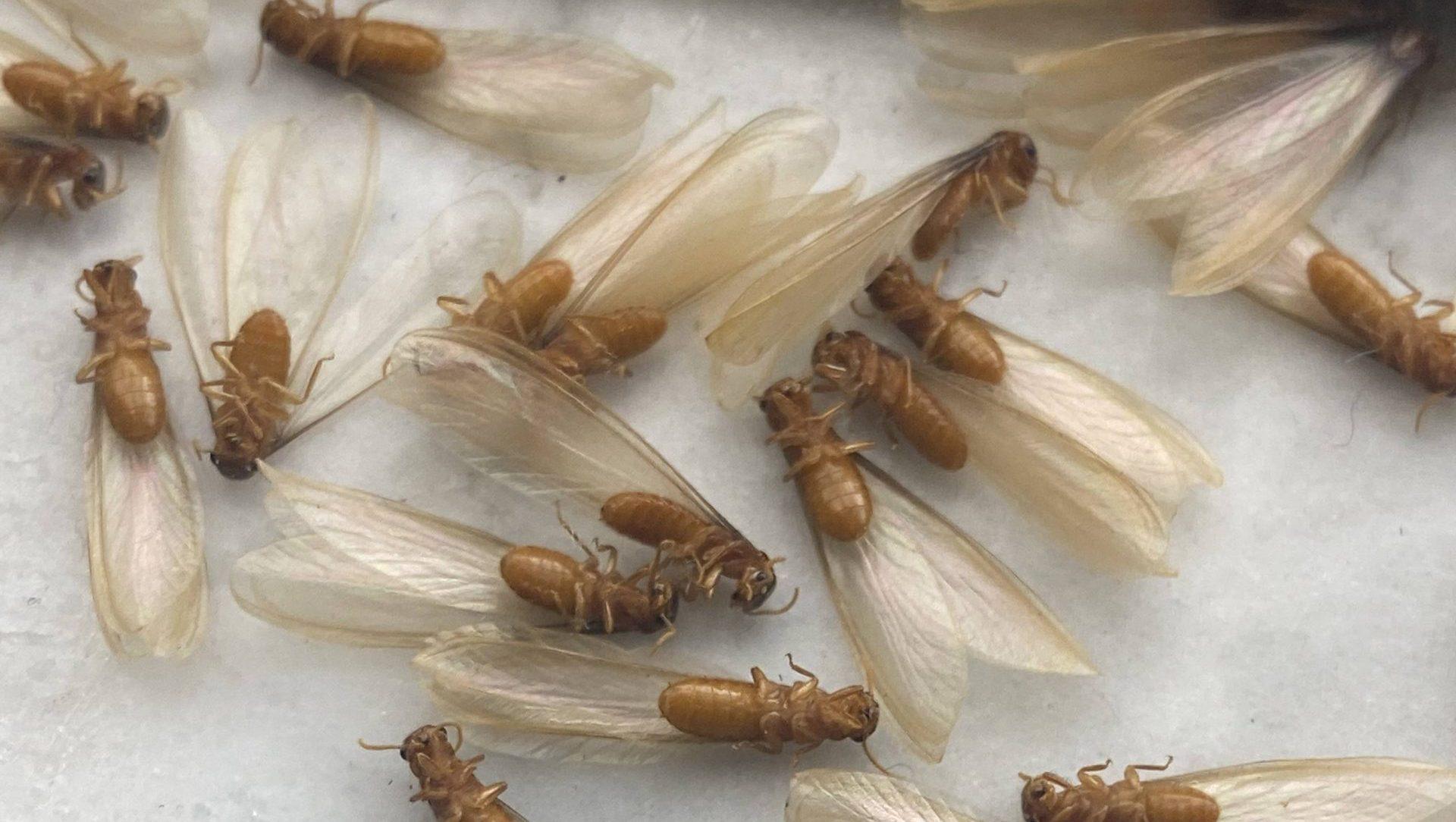 Formosan Termites
Formosan termites are known as “super termites” due to their highly aggressive behavior and large colony sizes. They are considered one of the most destructive types of termites in the world.
Formosan Termites
Formosan termites are known as “super termites” due to their highly aggressive behavior and large colony sizes. They are considered one of the most destructive types of termites in the world.
Characteristics of Formosan Termites
-
Shape: Cylindrical, elongated bodies with a broader thorax than other termites.
-
Size: Larger than other termites, about 1/2 inch (12 mm) in length.
-
Color: Pale yellowish-brown bodies with slightly darker wings.
-
Habitat: Underground colonies with mud tubes connecting to food sources, but they also build aerial nests in structures.
-
Damage: Formosan termites cause extensive damage quickly. Their large colonies (millions of termites) eat through wooden structures, including roofs, floors, and support beams.
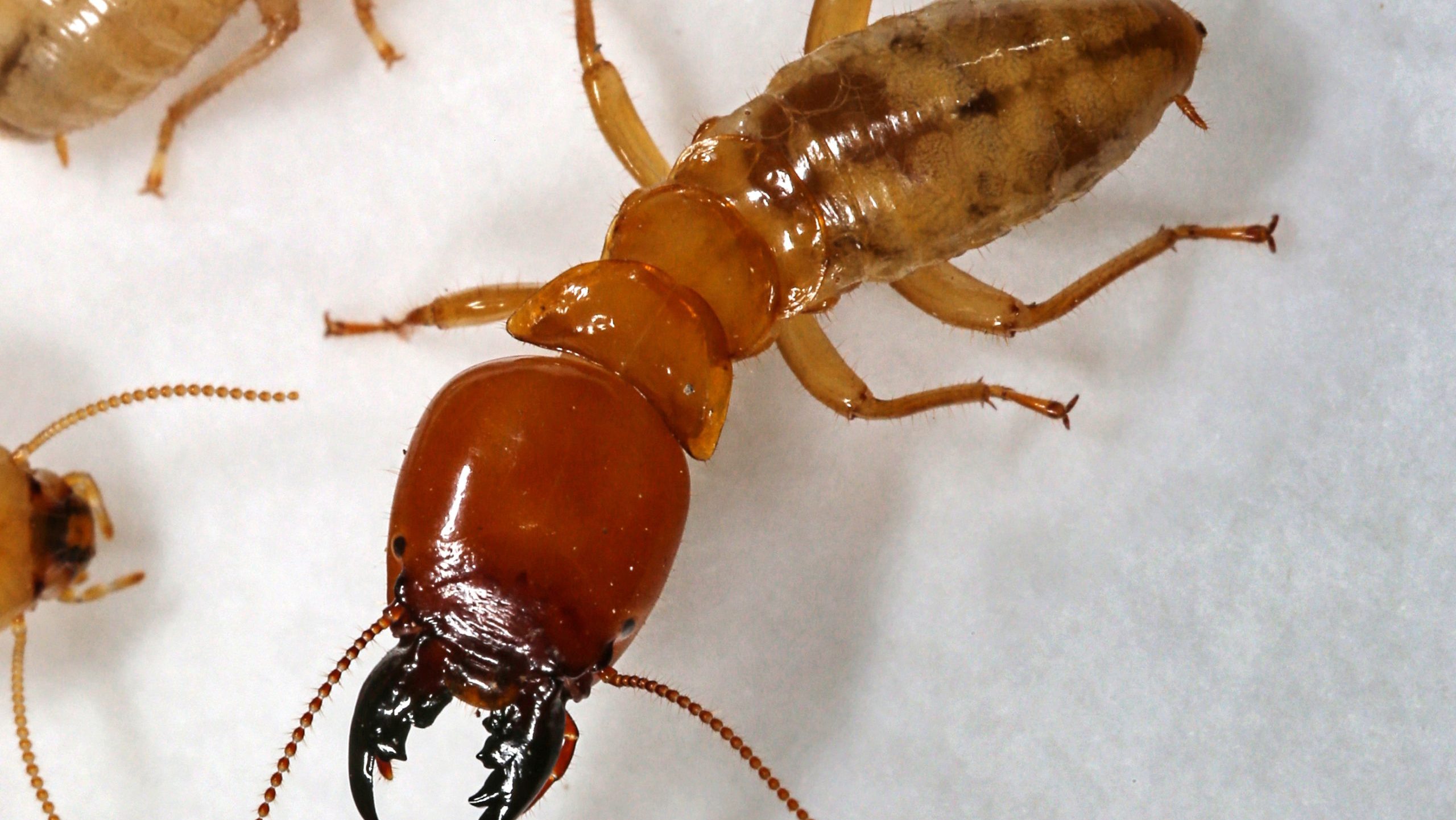 Dampwood Termites
True to their name, dampwood termites prefer moist, decaying, or water-damaged wood. They are less likely to infest homes unless there is significant water damage.
Dampwood Termites
True to their name, dampwood termites prefer moist, decaying, or water-damaged wood. They are less likely to infest homes unless there is significant water damage.
Characteristics of Dampwood Termites
-
Shape: Large, robust bodies with a prominent head.
-
Size: Larger than other termite species, reaching up to 3/4 inch (19 mm) in length.
-
Color: Light brown, reddish-brown, or yellowish-brown, depending on the species and life stage.
-
Habitat: Found in moist, water-damaged wood, such as rotting logs, fallen trees, and areas with plumbing leaks. Unlike subterranean termites, they do not create mud tubes.
-
Damage: Dampwood termites attack moist, water-damaged wood, hollowing it out from within. Signs of infestation include weakened, spongy wood that feels soft to the touch.
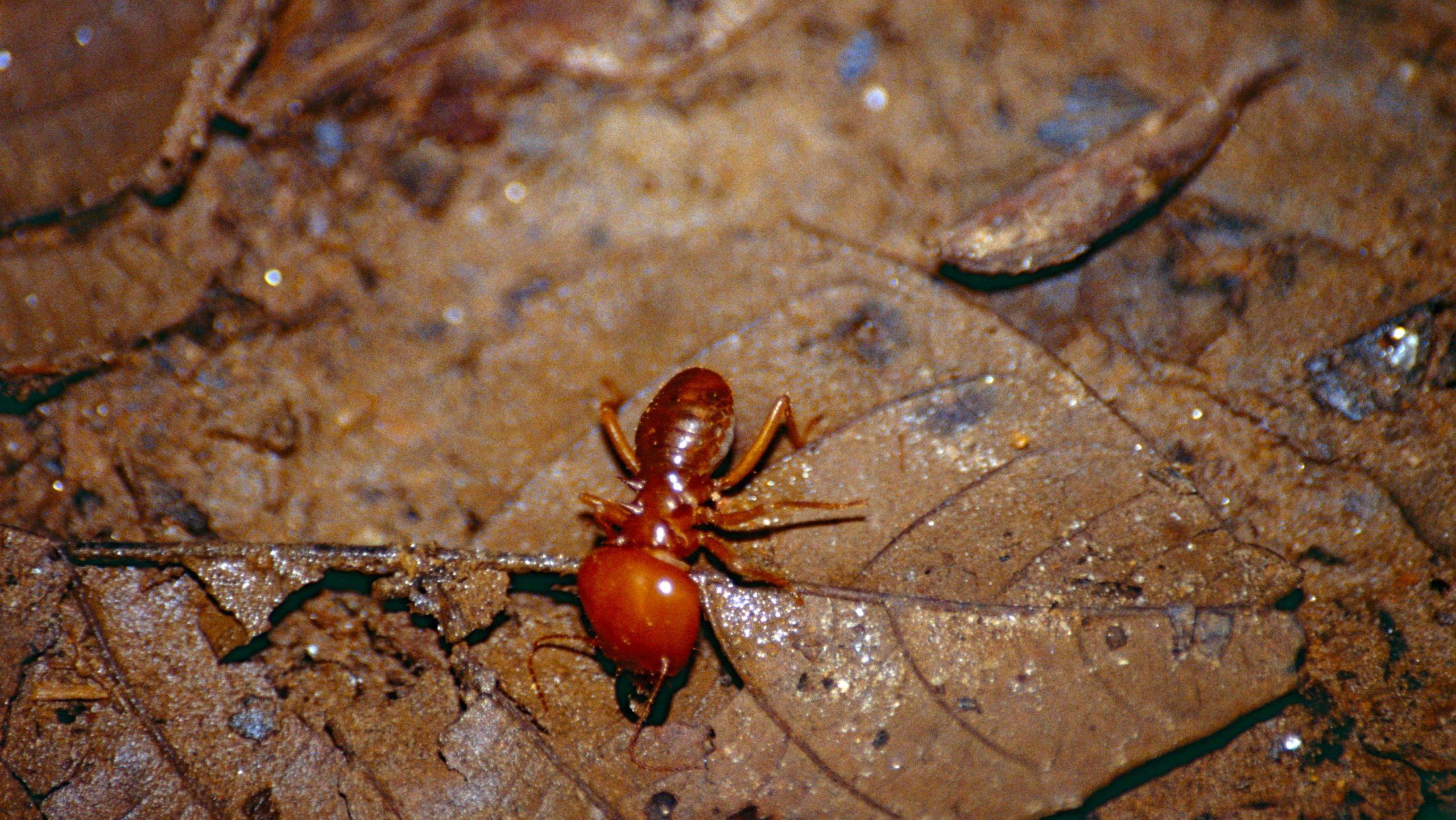 Conehead Termites
Conehead termites are unique in their appearance and behavior. Unlike other termites, they can move freely on the ground like ants, making them much harder to track and control.
Conehead Termites
Conehead termites are unique in their appearance and behavior. Unlike other termites, they can move freely on the ground like ants, making them much harder to track and control.
Characteristics of Conehead Termites
-
Shape: Rounded body with a unique cone-shaped head, especially visible in soldier termites.
-
Size: Workers are about 1/4 inch (6 mm) long, while soldiers are larger with distinctive cone-shaped heads.
-
Color: Brownish-yellow to dark brown.
-
Habitat: Found in trees, shrubs, and wooden structures like fences, decks, and sheds. They don’t rely on mud tubes, which makes them more mobile than other termite species.
-
Damage: Conehead termites aggressively feed on both wood and plant material. They build extensive tunnels in soil, trees, and wooden structures.
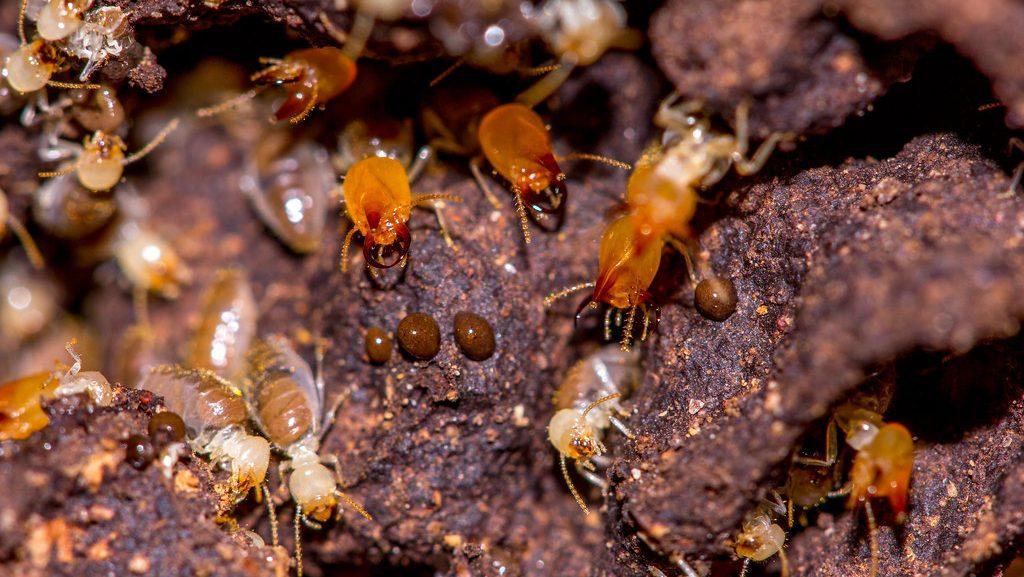
What Does a Baby Termite Look Like?
Baby termites, known as nymphs, are the juvenile stage of a termite’s life cycle. Though they resemble adult termites, nymphs are smaller, softer, and less developed. These young termites play a crucial role in the growth and sustainability of a termite colony as they mature into workers, soldiers, or reproductive termites (kings and queens).Characteristics of Baby Termites
-
Shape: Small, elongated, and soft-bodied, similar in shape to adult termites.
-
Size: Typically smaller than 1/4 inch (6 mm) in length.
-
Color: Pale white to translucent, often appearing “milky” or slightly transparent.
-
Body Structure: Unlike adults, baby termites lack hard exoskeletons, making their bodies softer and more delicate.
-
Role in the Colony: Baby termites do not have a fixed role at birth. As they molt and grow, they develop into workers, soldiers, or reproductive termites based on the colony’s needs.
What Does a Queen Termite Look Like?
The queen termite is of the utmost importance in a termite colony. Her primary role is reproduction, as she is responsible for laying thousands of eggs daily to make sure the colony survives and grows.Characteristics of a Termite Queen
-
Shape: Elongated body with a significantly swollen abdomen filled with eggs, making her look “bloated” compared to other termites.
-
Size: Can grow up to 3 inches (76 mm) in length, making her the largest member of the colony.
-
Color: Pale white or yellowish in color, often appearing glossy or translucent due to the egg-filled abdomen.
-
Body Structure: Unlike workers and soldiers, her body has a small head and thorax but a large, sausage-like abdomen. This is because her primary function is egg production.
-
Role in the Colony: The queen is the colony’s reproductive engine, laying thousands of eggs daily. Her presence determines the colony’s growth and overall survival.
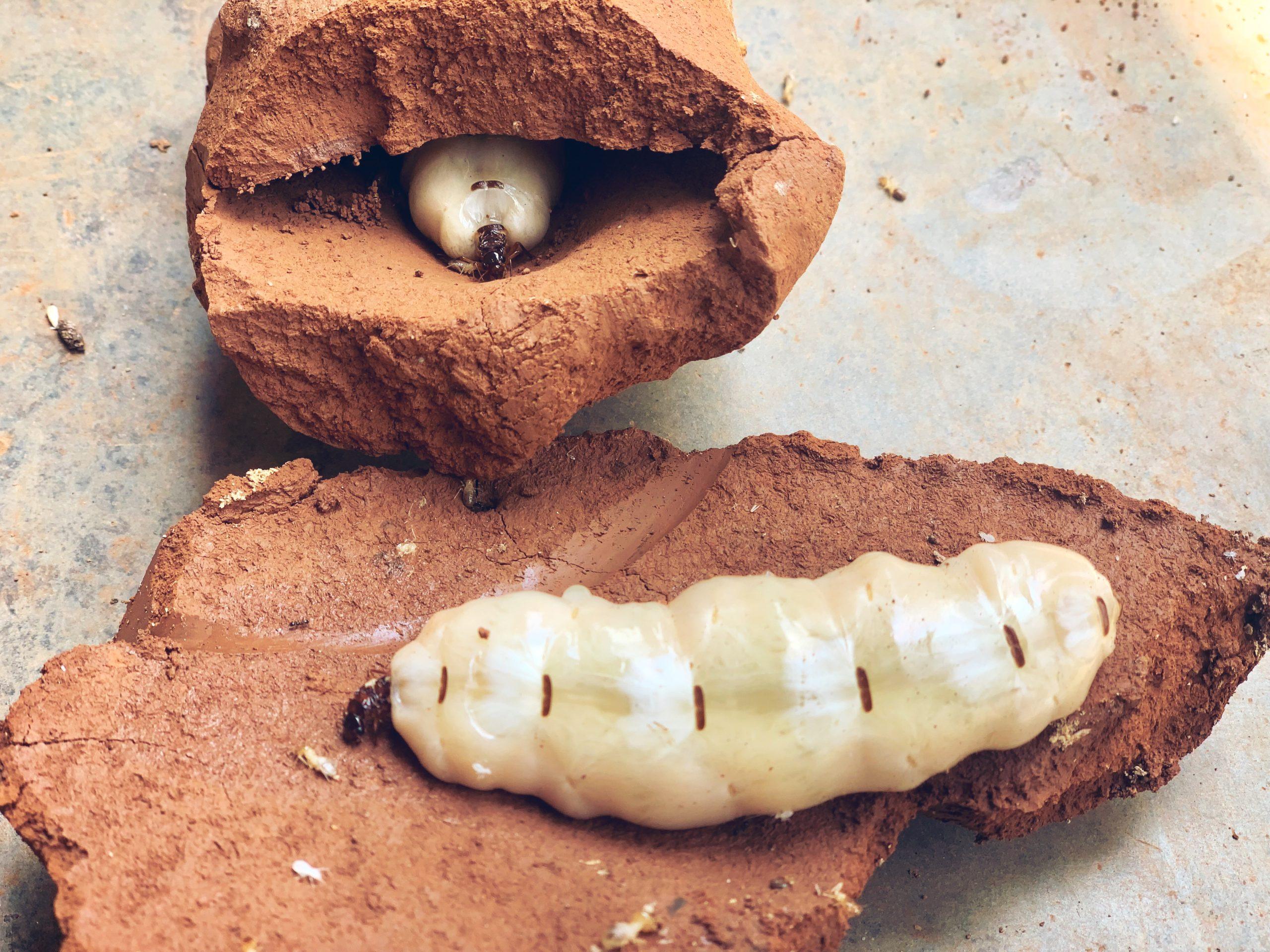 A queen termite’s lifespan is about 15 to 25 years, far longer than any other termite in the colony. During her lifetime, she can lay millions of eggs, allowing the colony to grow and sustain itself for decades. Her ability to produce so many eggs makes her the single most important member of the colony.
A queen termite’s lifespan is about 15 to 25 years, far longer than any other termite in the colony. During her lifetime, she can lay millions of eggs, allowing the colony to grow and sustain itself for decades. Her ability to produce so many eggs makes her the single most important member of the colony.
Signs of Termite Damage
Termite damage can affect wooden elements in your home, often leading to costly repairs if not detected early. Recognizing these warning signs early can prevent further damage and reduce repair costs. Hollow or Damaged Wood Termites eat wood from the inside, leaving hollow chambers that weaken its structure. Tapping on wood surfaces like floors or beams may produce a hollow sound, indicating termite activity. Mud Tubes Subterranean termites create mud tubes on walls, foundations, and other surfaces to travel between their nests and food sources. These protective tunnels are a clear indicator of active termite activity. Frass (Termite Droppings) Drywood termites expel pellet-shaped droppings called frass, which resemble sawdust or coffee grounds. Piles of frass near wooden furniture or baseboards signal termite activity inside the wood. Swarming Termites Swarming termites, or alates, are reproductive termites that fly in search of new nesting sites. Spotting swarming termites around windows, doors, or light sources indicates a nearby active colony.How to Prevent Termite Damage?
Preventing termite damage in home requires proactive measures to reduce their access to food, moisture, and shelter. Here are some effective ways to keep termites away from your home.Tips to Prevent Termite Infestations
-
Reduce moisture by fixing leaks, improving drainage, and using dehumidifiers.
-
Block cracks and gaps in foundations, walls, and rooflines to block entry points.
-
Keep firewood, mulch, and wooden debris away from your home’s foundation.
-
Maintain proper ventilation in crawl spaces, attics, and basements to reduce humidity.
-
Use termite-resistant or pressure-treated wood for construction and repairs.
-
Install mesh screens and physical barriers to block termite access to wood structures.
-
Remove cardboard, paper, and wood piles from areas near your home.
-
Schedule regular termite inspections to detect and prevent infestations.
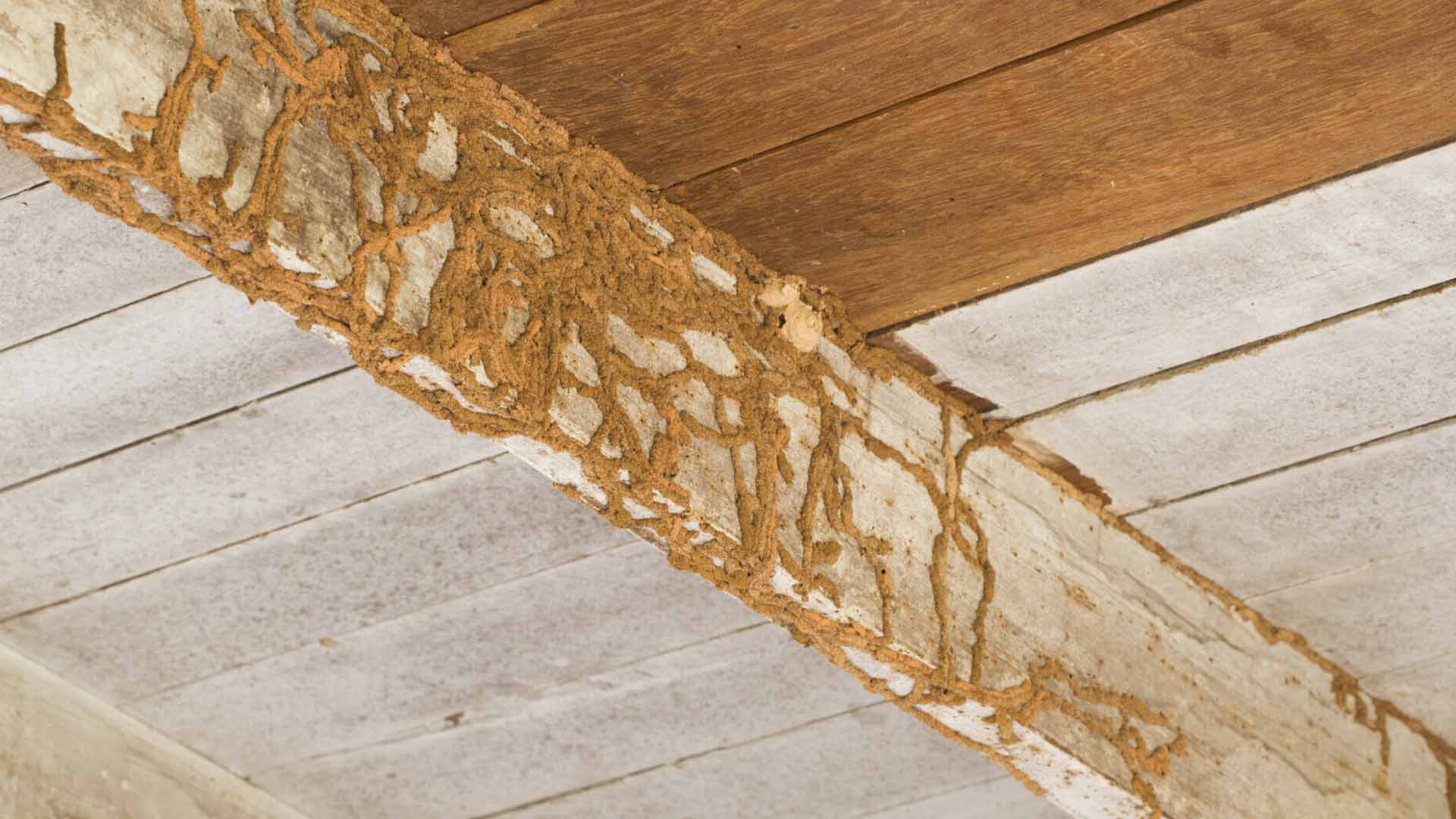
Myths and Facts About Types of Termite
Termites are often misunderstood pests, leading to several myths about their habits, appearance, and impact on homes. Believing these misconceptions can delay effective termite control and result in costly damage. Here are some common myths and the facts that debunk them:| Myth | Fact |
|---|---|
| All termites are the same. | Termites come in various species, each with unique traits and behaviors. |
| Baby termites are easy to spot. | Baby termites are small and often hidden, making them difficult to detect. |
| The queen termite is always visible. | The queen is typically found deep within the colony and may not be easily visible. |
| Termites only live in wood. | While termites feed on wood, some species also inhabit soil or decaying plant matter. |
| Identifying termites is simple. | Accurate termite identification requires knowledge of their life stages and species, often needing professional expertise. |





